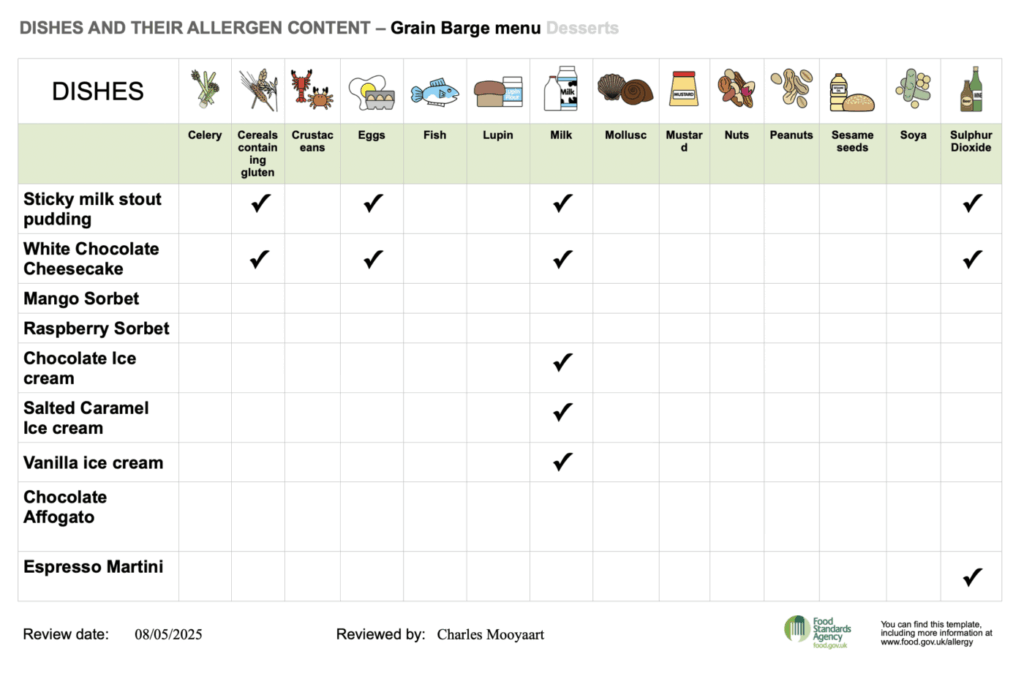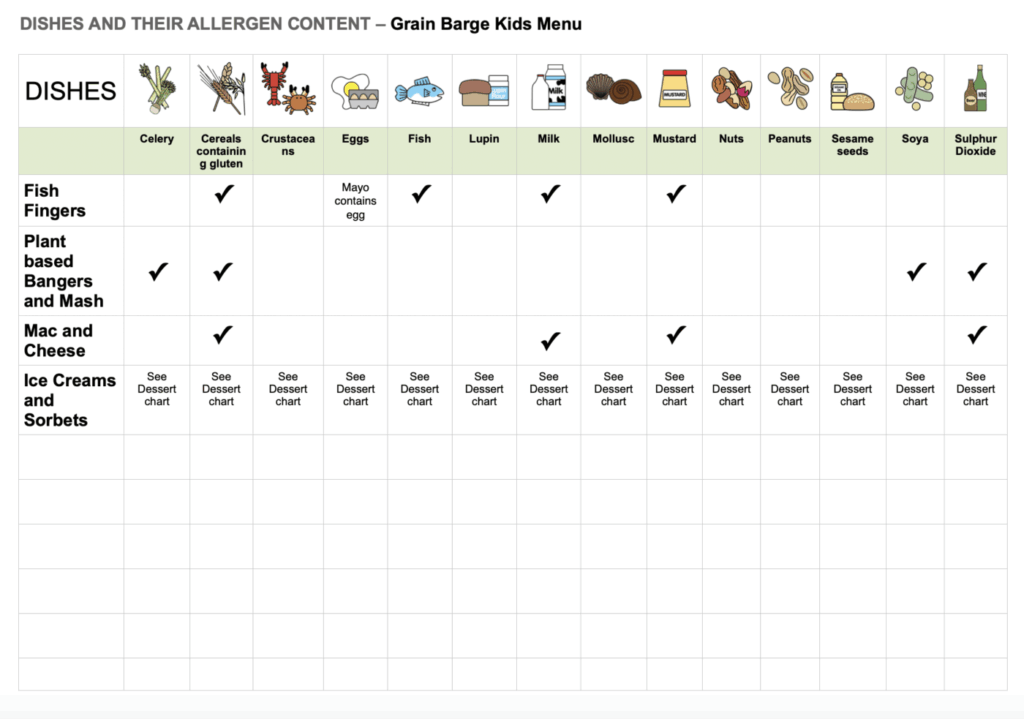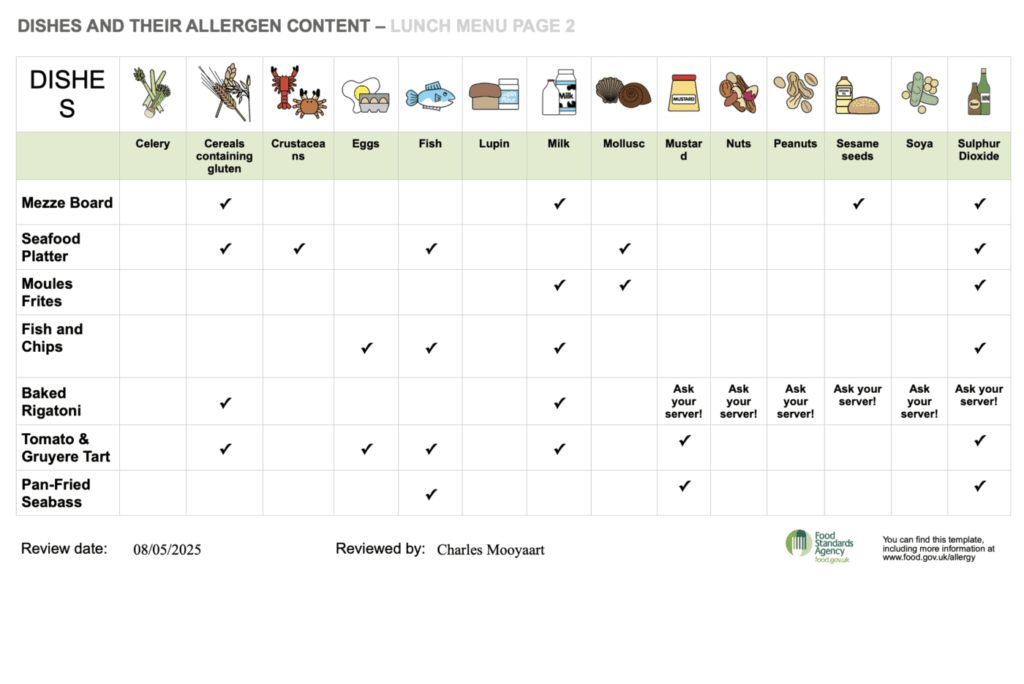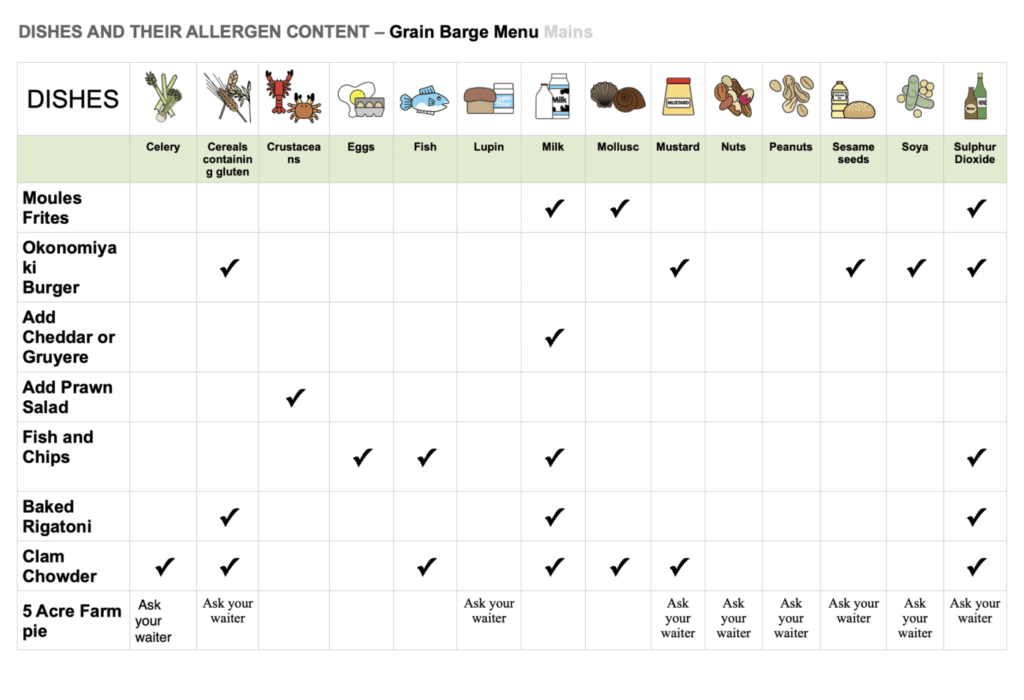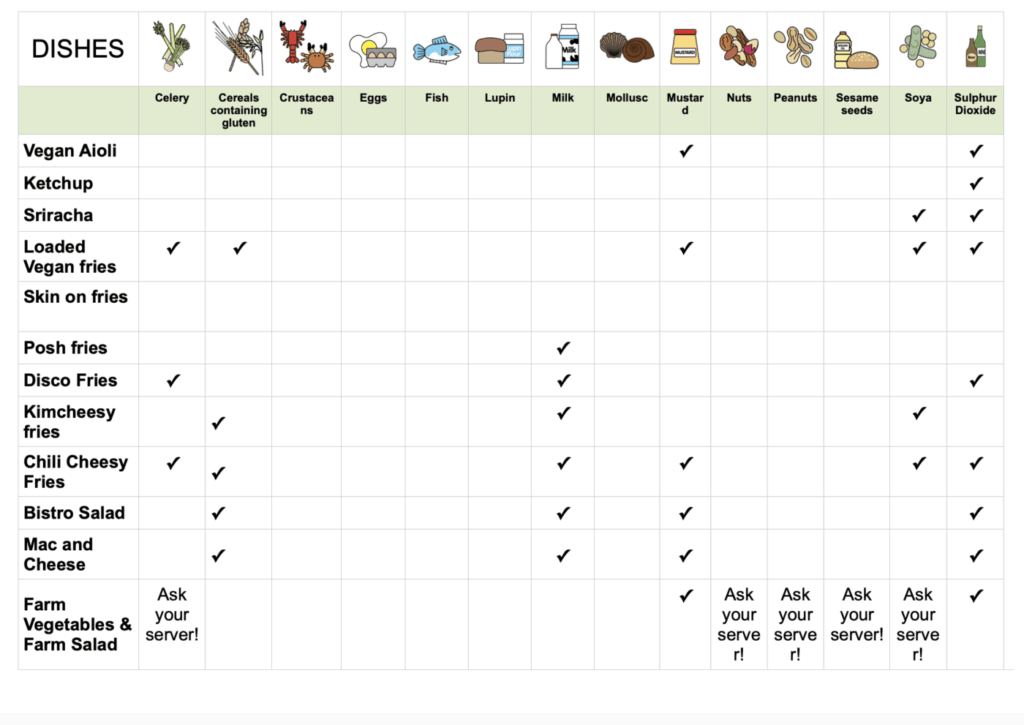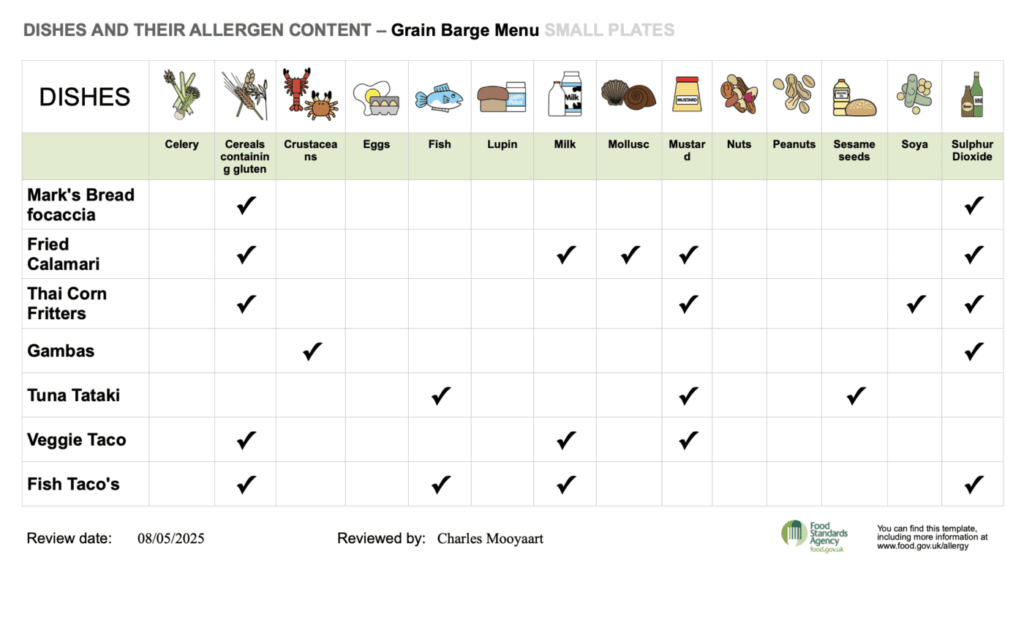VIEW THIS INFORMATION AS A PDF
Grain Barge Allergens Disclaimer Menu June 2025
If you have an allergy, please let us know and our team will take your order personally. Let us know your dietary requirements, including how severe your food allergy or intolerance is.
The allergen charts below show which of the 14 legally declarable allergens are contained in every dish on our menu. Because our recipes can change depending on availability of ingredients, it is important you always let us know about any allergies every time you order.
Though we recommend that you check the chart yourself, if you are allergic to a food that is not on the regulatory list, it may not be included on the allergen information provided. If in doubt, speak to a member of staff.
We have strict procedures* in place for taking and preparing allergen orders, but please be aware that allergenic ingredients are present on our premises and those of our suppliers.
We are always working to improve the clarity of allergen information provided to our customers. Getting this right is essential to ensure that food is safe for people living with food allergy or intolerances. We intend to make it as clear as possible so that customers with food (hyper)sensitivity and dietary requirements don’t make the wrong food choices. It is very important to us that our customers are well informed and protected.
If you are not sure about a dish or about the information you have been provided, don’t risk it! Don’t order the dish or eat at the premises.
14 allergens
Food businesses need to tell customers if any food they provide contain any of the listed allergens as an ingredient. Consumers may be allergic or have intolerance to other ingredients, but only the 14 allergens are required to be declared as allergens by food law.
The 14 allergens are: celery, cereals containing gluten (such as barley and oats), crustaceans (such as prawns, crabs and lobsters), eggs, fish, lupin, milk, molluscs (such as mussels and oysters), mustard, peanuts, sesame, soybeans, sulphur dioxide and sulphites (if they are at a concentration of more than ten parts per million) and tree nuts (such as almonds, hazelnuts, walnuts, brazil nuts, cashews, pecans, pistachios and macadamia nuts).
This also applies to additives, processing aids and any other substances which are present in the final product.
Avoiding allergen cross-contamination*
It is important for us to take steps to avoid cross-contamination in food preparation
to protect customers with a food allergy. There are several actions we take to prevent cross-contamination with allergens, these include:
- cleaning utensils before each use, especially if they were used to prepare meals containing allergens
- washing hands thoroughly between preparing dishes with and without certain allergens
- storing ingredients and prepared foods separately in closed and labelled containers
- keeping ingredients that contain allergens separate from other ingredients
V: Vegetarian = Food not containing meat
Meat is excluded for vegetarians for health or for religious or moral reasons.
Our vegetarian cuisine refers to food that meets vegetarian standards by not including meat and animal tissue products. Eggs and dairy products such as milk and cheese are permitted in our definition. Our dairy and eggs are free range.
What to expect from our vegetarian dishes
• Traditional foods that have always been vegetarian
• Soy products including tofu and tempeh which are common protein sources
• Textured vegetable protein, made from defatted soy flour, often included in chili and burger recipes in place of ground meat
• Meat analogues, which mimic the taste, texture, and appearance of meat and are often used in recipes that traditionally contained meat.
VGN: Vegan = a dietary suitability claim
Food/dishes that intentionally don’t use ingredients of animal origin (e.g. meat, fish, crustaceans, molluscs, milk, eggs and honey). This can be for varied reasons, such as ethical, environmental, and/or nutritional, and/or a combination of these reasons. Our Food labelled as ‘vegan’ is not made from or with the aid of animals or animal products. In certain cases, due to manufacturing processes, a vegan product may be unsuitable for allergic consumers who react to certain animal ingredients (e.g. milk) and a suitable precautionary allergen statement should therefore be used (i.e. ‘may contain milk’). There is no legal definition of the term ‘vegan’ in UK or EU law,
however General Food Law requires food to be safe and for its labelling or other presentation to not mislead consumers. Please let us know if you have any concerns.
GFA: Gluten Free Available
Modifications can be made to the dish so that it can be served without the gluten containing ingredient. For example regular bread can be swapped with gluten free bread.
GF: Gluten Free = Food that doesn’t have gluten-containing ingredients
Gluten is a protein found in wheat, barley, rye and triticale (a cross between wheat and rye). We are pleased to offer a variety of gluten free options on our food menu. We are not a gluten-free restaurant and cannot ensure that cross contamination will never occur. We have processes in place to minimise that happening. If you are a Celiac and/or highly sensitive, please advise the person taking your order and know that we will do our best but cannot guarantee your order will not touch gluten somewhere in the process.
Despite the significant efforts we go to, we cannot eliminate the risk of cross-contamination and therefore cannot guarantee any of our dishes are 100% free of allergens.
